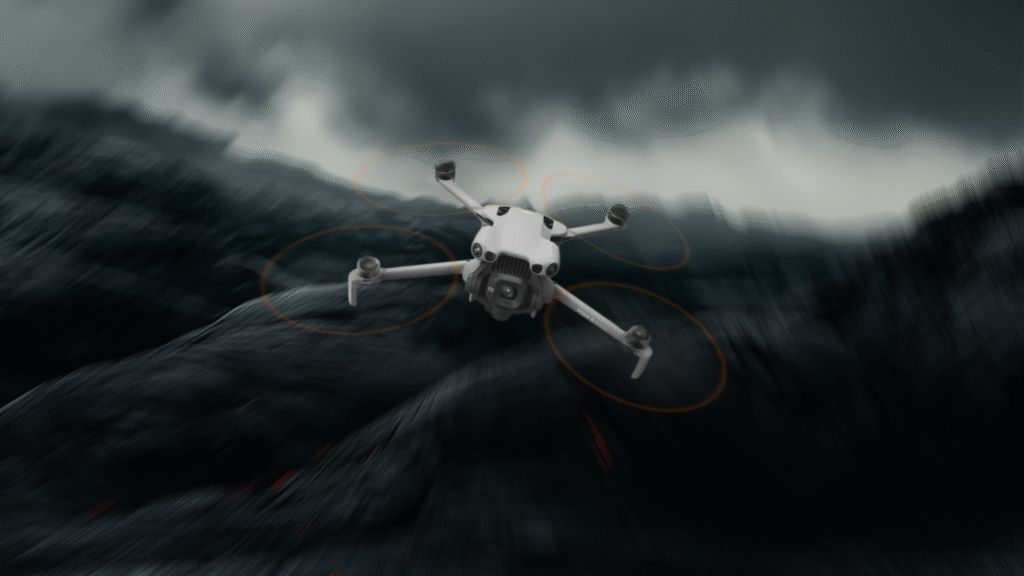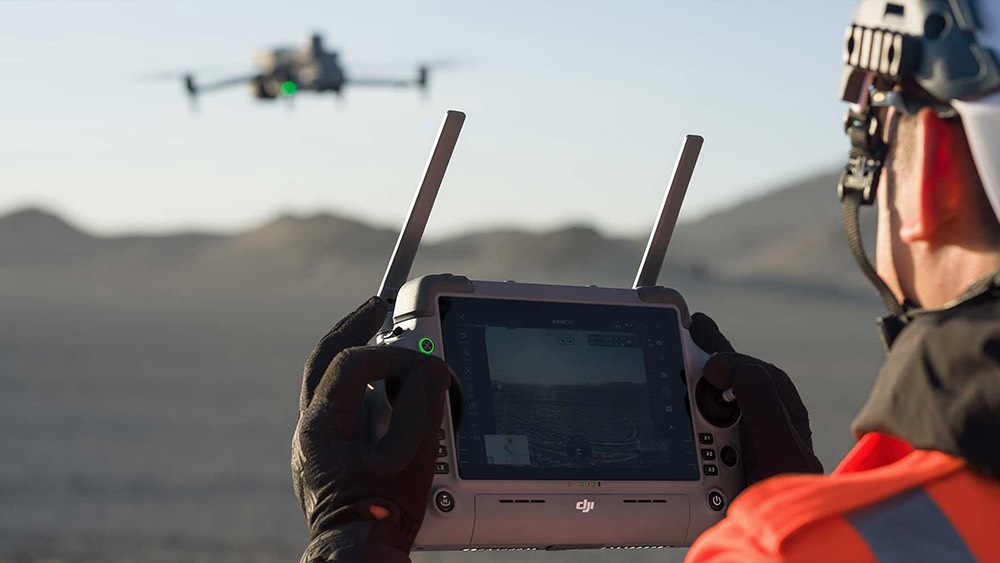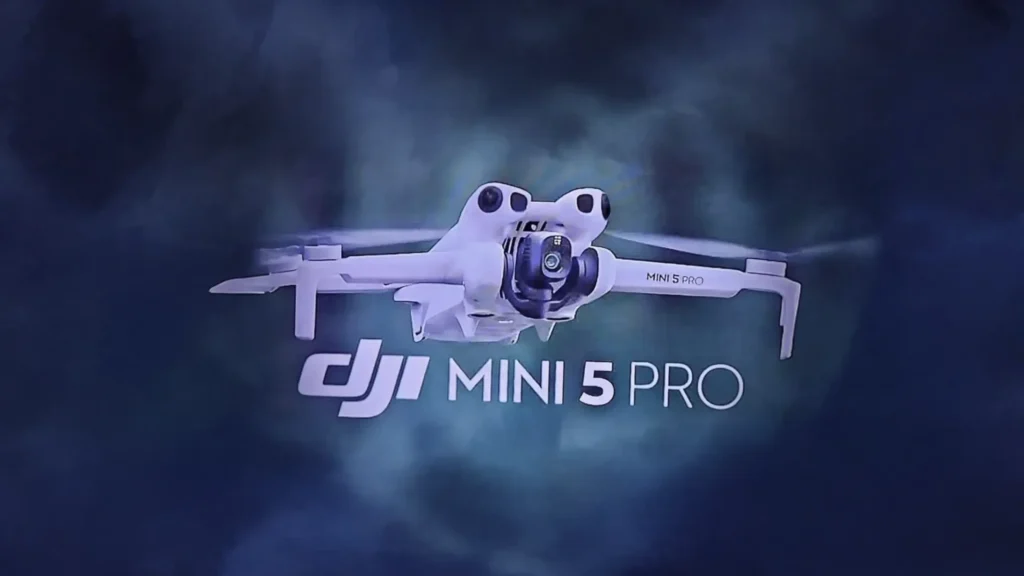DJI Mini 5 Pro Fly More Combo: Which Version Should You Choose?
The DJI Mini 5 Pro Fly More Combo RC-N3 vs RC-2 comparison is one of the most asked questions by drone enthusiasts today. Both versions of the Mini 5 Pro pack powerful features, but choosing the right one depends on your needs.
DJI Mini 5 Pro is DJI’s latest ultralight drone offering, designed to deliver premium imaging performance in a travel-friendly package. Featuring a 1-inch CMOS sensor, LiDAR-powered obstacle sensing, high frame-rate 4K video, and a lightweight, foldable body (under 249 g), it’s aimed at creators who want professional features without the burden of a heavy drone. The Fly More Combo versions bundle in extra batteries, accessories, and better remote-controller options, making them ideal for longer flights or more serious aerial work.
Beyond its compact size, the DJI Mini 5 Pro brings advanced flight intelligence to the table. With an extended 52-minute flight time, creators can capture more footage in a single session without constant recharging. The LiDAR-powered obstacle sensing system provides precise awareness of surroundings, making flights safer and smoother, even in complex environments. Whether navigating tight spaces or flying over landscapes, the drone is built to inspire confidence in both beginners and seasoned pilots.
What sets the Fly More Combo apart is its added convenience for creators who don’t want to be limited by a single battery or basic controls. Options like the RC-N3 or RC-2 controllers cater to different preferences, while additional accessories ensure uninterrupted shooting sessions. For travelers, vloggers, or professional filmmakers, the DJI Mini 5 Pro Fly More Combo offers a complete toolkit that maximizes both creativity and reliability in the sky.
DJI Mini 5 Pro Fly More Combo (RC-N3)
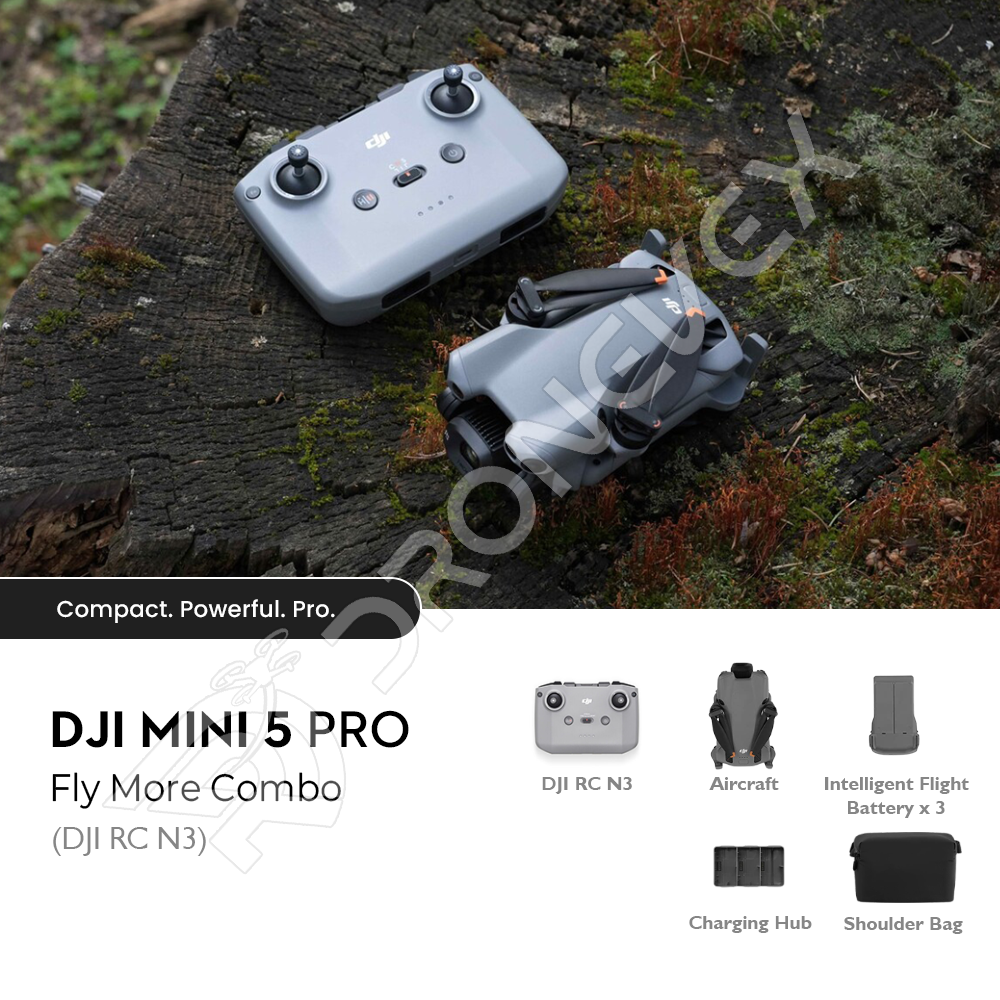
The RC-N3 Fly More Combo is designed for drone pilots who value flexibility and affordability. Instead of a built-in screen, it uses your smartphone as the display, keeping the overall cost lower while still offering the same drone performance. This setup is particularly appealing if you already own a high-quality smartphone with a bright screen that can handle DJI Fly app visuals without lag.
One of the biggest advantages of the RC-N3 option is its lighter weight and compact design. Since the controller itself is simpler, the overall setup feels less bulky to carry around, which is perfect for travelers, hikers, or creators who want a minimal kit in their bag.
However, using your smartphone also means relying on its battery life and performance. If you’re shooting long sessions, your phone may drain quickly, and bright sunlight can sometimes make the screen harder to see. Still, for pilots comfortable with using their phone, this is a practical and cost-effective choice.
Overall, the RC-N3 Fly More Combo offers an excellent balance of performance and price. It delivers the same flight time, obstacle avoidance, and imaging quality as the RC-2 combo.
DJI Mini 5 Pro Fly More Combo (RC-2)
The RC-2 Fly More Combo is tailored for creators and professionals who want a seamless, ready-to-fly experience. Unlike the RC-N3, the RC-2 features a 5.5-inch built-in FHD screen with high brightness, which means you don’t need to attach your smartphone to the controller. This not only saves setup time but also ensures consistent performance without depending on your phone’s battery or connectivity.
The convenience factor here is huge. You can power on, launch, and start flying without fiddling with cables or mounts. In bright outdoor conditions—where smartphone screens often struggle—the RC-2’s high-brightness display ensures you always have a clear, reliable view of your flight.
That said, the RC-2 controller is slightly heavier and bulkier than the RC-N3 setup. It also comes at a higher price point, which may not appeal to casual hobbyists. But for professionals, travelers, and frequent flyers, the extra investment often feels justified for the time saved and the reliability gained.
The RC-2 combo is ideal for users who demand efficiency and professionalism in their workflow. Whether you’re a filmmaker capturing dynamic aerial shots or a traveler wanting quick setups on the go.
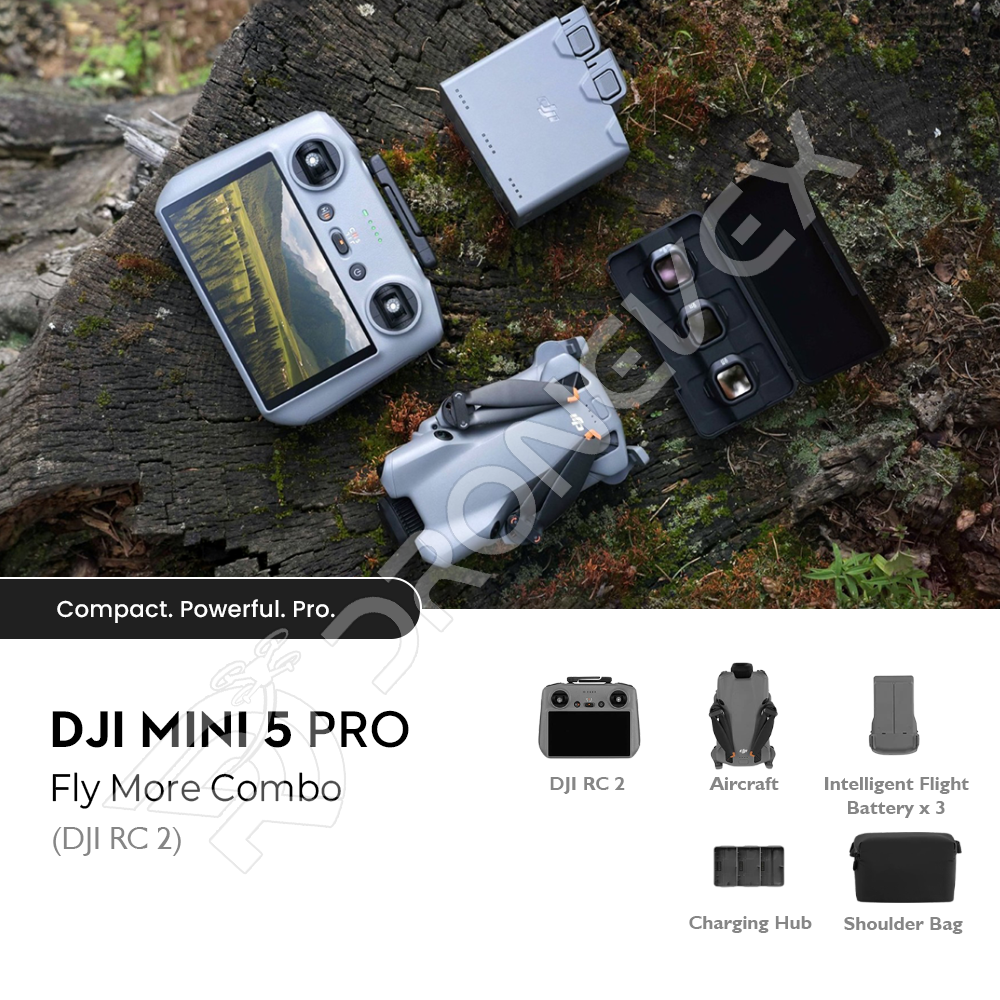
Comparison: RC-N3 vs RC-2 Variants

DJI Mini 5 Pro Fly More Combo RC-N3 vs RC-2 share many core features: same drone body, imaging capabilities, obstacle sensing, flight time, etc. The main differences lie in the remote controller, convenience features, and pricing.
Below is how they match up:
| Feature | DJI Mini 5 Pro Fly More Combo (RC-N3) | DJI Mini 5 Pro Fly More Combo (RC-2) |
|---|---|---|
| Remote Controller | RC-N3: controller without built-in screen, uses your smartphone for display. | RC-2: built-in 5.5-inch FHD display (~700 nits), no need for your phone. |
| Weight of Controller / Setup | Lighter overall controller setup since no screen built in. | RC-2 controller adds weight (~420 g for the controller) due to display and built-in components. |
| Convenience & Workflow | You rely on smartphone + cables, phone battery, etc. The RC-N3 is simpler but you need to attach phone, ensure visibility. | RC-2 is more self-contained; the screen is always visible, which is a plus in bright daylight or when you don’t want to fuss with phone mounting. |
| Price | ~ ₹117,000 for RC-N3 combo. | ~ ₹125,000 for RC-2 combo. |
| Suitability | Great if you already have a good phone, or want to keep overall cost slightly lower. Good if lightweight setup is more important. | Better if you prefer convenience and built-in tools, or fly often in bright light / want the display always visible / less fuss with phone. |
Which One Should You Pick?

Choosing between the DJI Mini 5 Pro Fly More Combo RC-N3 vs RC-2 comes down to your priorities and shooting style.
If you’re someone who travels frequently, shoots outdoors, and prefers a setup that’s quick and hassle-free, the RC-2 version is the smarter choice. Its built-in screen means you don’t have to rely on your smartphone, which not only saves setup time but also ensures better visibility under direct sunlight. This makes it ideal for travelers, vloggers, or professionals who need to be ready to fly at a moment’s notice.
On the other hand, if budget-friendliness and flexibility are higher on your list, the RC-N3 version gives you nearly the same flying experience but requires you to connect your phone for display. While this adds one extra step before takeoff, it also makes the package lighter on your wallet without compromising on core features like 4K video recording, LiDAR obstacle sensing, and extended flight time.
For content creators who shoot a lot of vertical videos—whether for Instagram Reels, TikTok, or YouTube Shorts—both versions support the versatile 225° gimbal rotation, so you’ll get smooth vertical footage no matter which controller you choose. At this point, it really comes down to which controller you find more comfortable to use during long sessions.
In terms of flight performance, both combos deliver a similar experience with the standard battery, giving you around 52 minutes of air time. If you’re considering the ‘Plus’ battery option for longer flights, just be mindful of legal drone weight restrictions in your country. For example, in India, staying under the 249 g category avoids certain regulatory hurdles, as outlined by the DGCA drone regulations. Choosing the standard battery may therefore be the safer option for compliance.
Specifications Table
| Specification | Detail (common to both variants) |
|---|---|
| Sensor & Imaging | 1-inch CMOS, 50 MP stills; aperture around f/1.8. HDR, D-Log M & HLG video modes. |
| Video Modes | 4K/60 fps HDR; up to 4K/120 fps for slow motion. |
| Gimbal & Orientation | 3-axis gimbal with 225° rotation, allowing true vertical shooting (for reels etc.). |
| Obstacle Sensing | Omnidirectional vision sensors + LiDAR (especially forward/LiDAR). Enhanced obstacle detection even in low light. |
| Flight Time | Standard battery ~36 minutes; possibility of “Plus” battery for longer times (if available/allowed) |
| Transmission / Range | DJI’s O4+ transmission; under ideal conditions up to ~20-25 km (FCC/region permitting) |
| Weight | Under 249 g (with standard battery) – keeps it in ultralight/drone legal-friendly class in many jurisdictions. |
| Remote Controller (Differences) | RC-N3: no built-in screen; uses smartphone; lighter. RC-2: built-in 5.5″ screen (~700 nits), internal storage details; more self-contained. |
| Included Accessories (Fly More Combo) | Extra batteries, spare propellers, carry case/travel case, charging hub, etc. |
FAQ's
Is the DJI Mini 5 Pro legal to fly in India?
Yes — under 249 g weight, it generally falls under lighter drone regulatory categories. But always check current DGCA rules and any local permissions or no-fly zones.
What kind of obstacle avoidance does it have?
It has omnidirectional vision sensors + LiDAR, including enhanced sensing in low light, which helps avoid collisions in complex environments.
How long can I fly on one battery?
About 36 minutes under standard conditions with standard battery. With additional batteries or “Plus” battery (if available for your version), you can extend that.
Can I shoot vertical content for social media?
Yes — the gimbal supports 225° rotation, letting you shoot true vertical (portrait) video without special mounts.
Is the RC-2 controller much better? Is it worth the extra cost?
It depends on how you fly. RC-2’s built-in screen makes flights more convenient, especially in bright daylight or when you don’t want to rely on your phone. If that convenience matters to you, the extra cost can be justified. If you’re comfortable using your phone, RC-N3 gives nearly all features at lower cost.
Are batteries from previous Mini models compatible?
Yes, according to the product pages, Mini 5 Pro supports batteries from Mini 3 Pro and Mini 4 Pro — which is helpful if you already own older Mini series drones.
